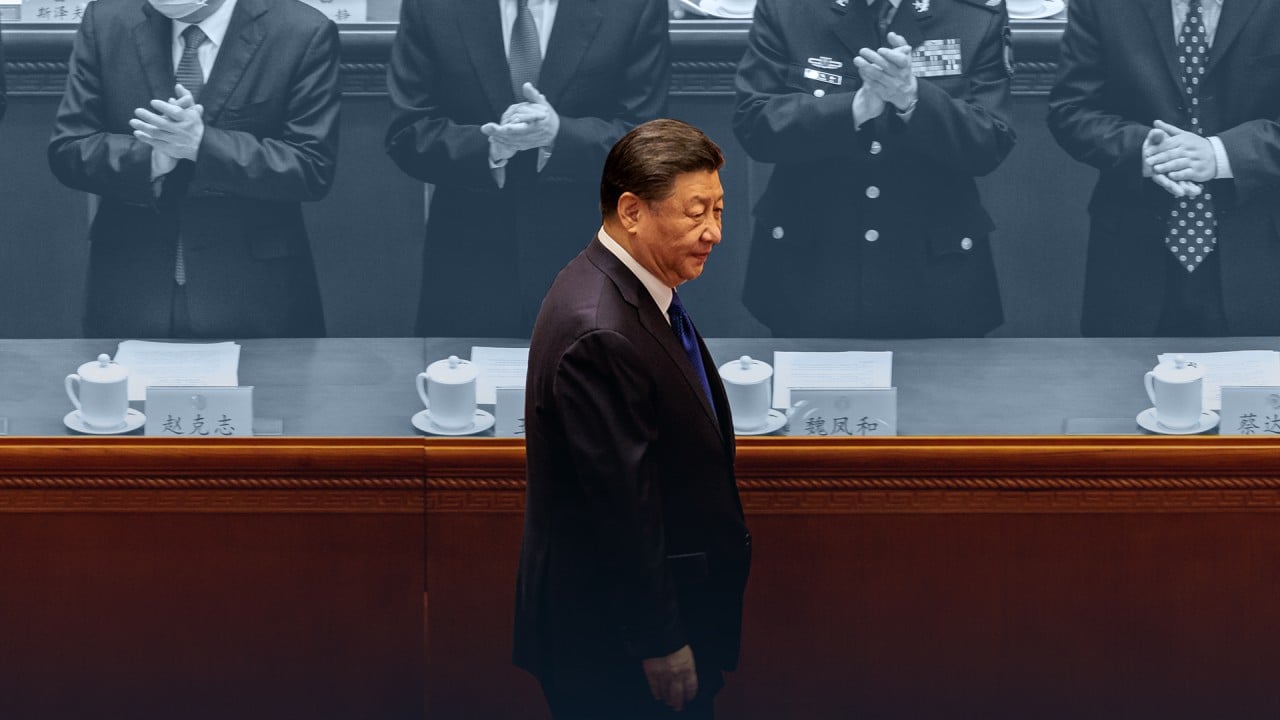
China’s ‘two sessions’ 2023: Asia-Pacific uncertainties drive arms build-up
- China is the latest country in the region to announce a boost in its defence budget, with analysts expecting the trend to gather pace
- Growing humanitarian crises adding to demand for military capacity in unstable security environment, observers say
An increasingly challenging security environment has prompted countries in the Asia-Pacific region to jack up their military spending this year, with observers expecting the build-up to gather pace.
“The armed forces should intensify military training and preparedness across the board, develop new military strategic guidance, devote greater energy to training under combat conditions, and make well-coordinated efforts to strengthen military work in all directions and domains,” he told the thousands of deputies.
Li cited uncertainties in the external environment and said attempts to “suppress and contain China” were escalating.
Rajeev Ranjan Chaturvedy, an international studies professor at India’s Nalanda University, said the regional security environment was highly unstable.
“[The] changing geopolitical and geoeconomic situation has raised the temperature in the oceanic space in Southeast and East Asia.”
China’s increased defence budget would help to fulfil its military modernisation plans, particularly the build-up of its naval forces and other technical capabilities, he said.
Alfred Wu, an associate professor with the Lee Kuan Yew School of Public Policy at the National University of Singapore, said the bigger allocation was driven not only by external conditions, but also for domestic reasons.
China’s armed forces also served to maintain “regime stability”, with the potential for troops to be deployed to quell domestic protests, he said.
While the budget rise was well within analysts’ expectations – China has maintained single-digit growth in its annual defence budget since 2016 – it came as other Asia-Pacific countries have been seeking to bolster their external defences.
Ukraine war, 1 year on: China’s neighbours intensify regional arms race
India last month proposed to increase its defence spending by an estimated 13 per cent, which would see more fighter jets and roads added along its tense border with China.
Japan in December also unveiled a record-high military budget – a planned doubling of its defence spending – to help deal with regional challenges, from an increasingly assertive China to an unpredictable North Korea.
South Korea, meanwhile, earlier announced a 4.6 per cent bump in its defence budget for force modernisation among other things, citing a “severe security situation”.
Chaturvedy said China’s neighbours had kept a close eye on its military expansion plans and were concerned with its increasing military posture and the use of unilateral force.
“China is a major security concern for India and other Asian countries,” he said. “Certainly, Chinese military adventures and the increased allocation of resources have accelerated defence collaborations among like-minded countries … to enhance strategic access and stability.”
Fear and anxiety have driven Japan’s increased defence spending, with its budget hike linked to the “rapid shift of balance of power” in East Asia in recent years, according to Cheung Mong, an associate professor with the school of international liberal studies at Waseda University.
China and US step up military preparedness in Asia-Pacific region
Cheung said Japan’s military expansion blueprint was the “most ambitious” yet, naming a potential conflict in the Taiwan Strait and the defence of the disputed islands in the East China Sea as Tokyo’s key concerns.
He said he expected governments in the region to continue boosting defence expenditure, as the war in Ukraine had made security threats a primary concern.
Chaturvedy said Asia’s growing defence expenditure could not solely be attributed to the growing Chinese threat.
Other concerns that countries have aired include non-security threats, such as humanitarian assistance, especially after the earthquakes in Turkey and Syria which took more than 50,000 lives.
Singaporean Foreign Minister Vivian Balakrishnan said on Monday there would be “greater expenditure” from countries, including in Asia, on the defence front but said this did not necessarily imply an arms race.
“The rules-based world order, the focus on economic integration, liberal economics, free trade, all that was a formula for peace and prosperity and now the faith in those pillars has been shaken. It’s a flight to safety in a way,” he said, in an interview with Bloomberg.
“The last seven, eight decades of the peace dividend after the Second World War is over, and you’re going to see increased defence expenditure literally all over the world.”
China races for influence as it frets over US footholds in Southeast Asia
Wu, from the National University of Singapore, said China’s defence budget may have raised some eyebrows in the region but there would also be some fear over the “unknown” amount spent on the PLA.
Pointing to Beijing’s opacity with its military spending and expansion plans, Wu said he expected the actual number to be “a lot larger” than the amount released on Sunday.
China has also allocated a significant 12.2 per cent increase in the budget for “diplomacy endeavours”, which would include deepening overseas financial and economic exchanges, opening up further, and pushing forward “high quality” building of the ambitious Belt and Road Initiative.
Talk of China’s ‘hidden military spending’ slammed as ‘baseless fantasy’
Wu said there was little hope that part of the diplomacy budget would go to mending Beijing’s strained ties with Washington. Instead, he suggested that China was likely to channel parts of the increased spending into building stronger ties with the Middle East and Southeast Asia.
As the US has sought to expand its influence in Southeast Asia, China in recent years has shown an increased eagerness to court the countries in its own backyard, including the 10 member states of the Association of Southeast Asian Nations.
“China will be more present in its diplomatic efforts in Southeast Asia this year as it sees more opportunities in Asean,” Wu said.




